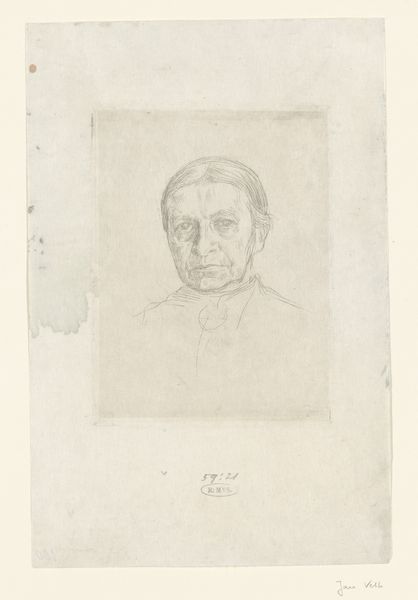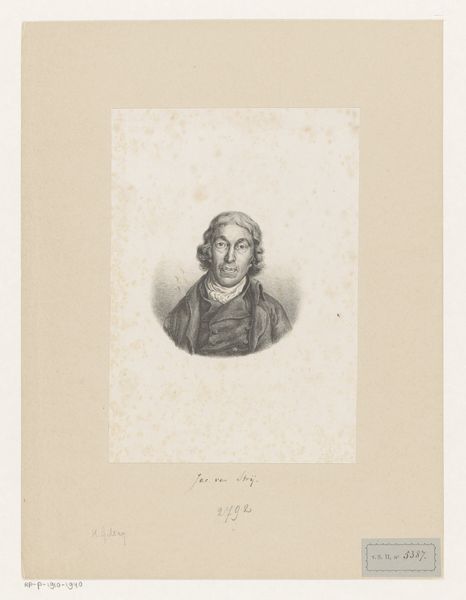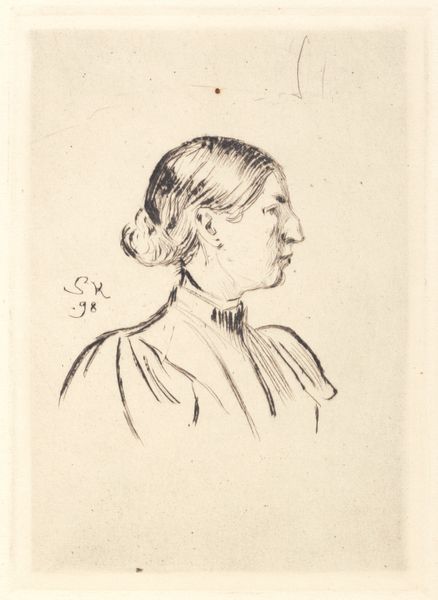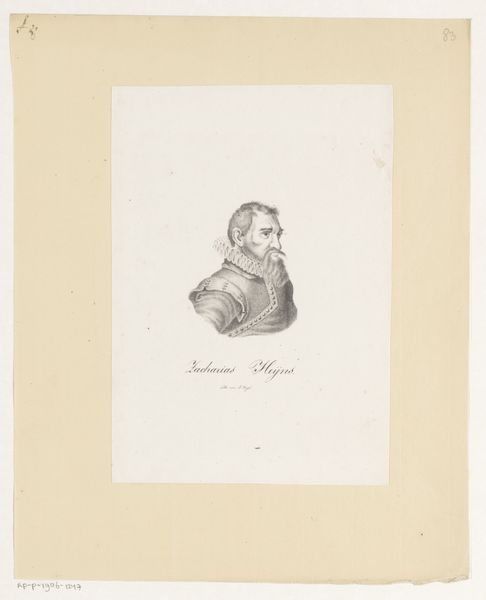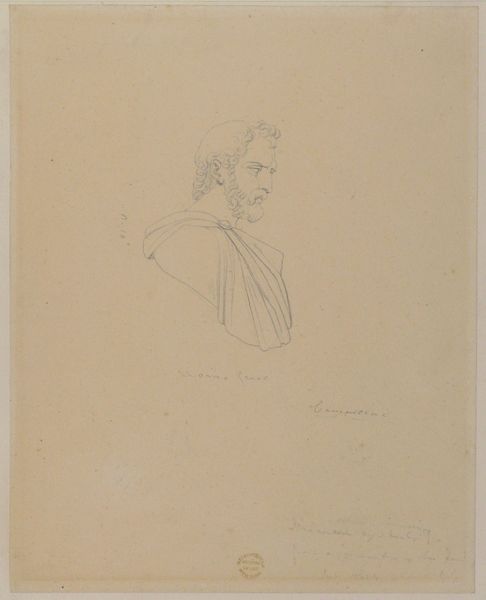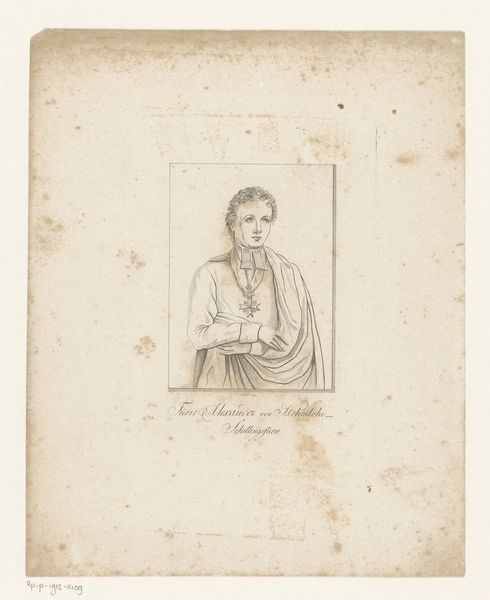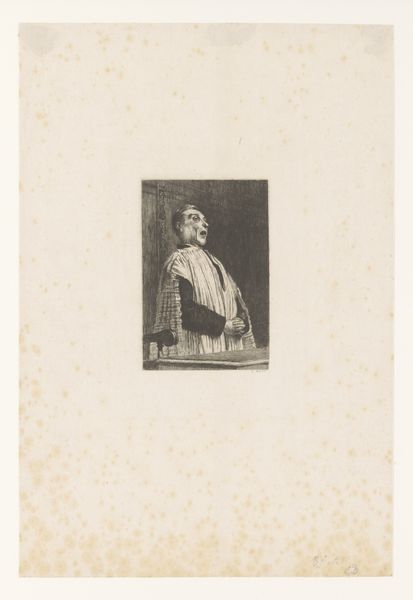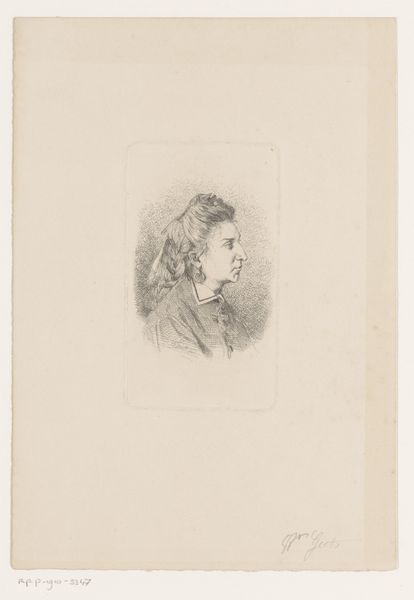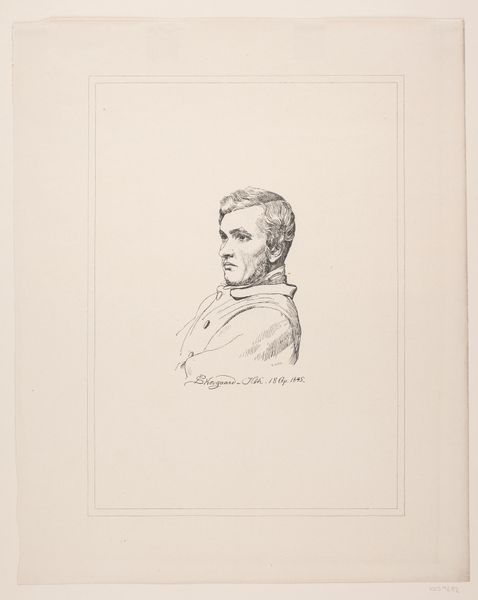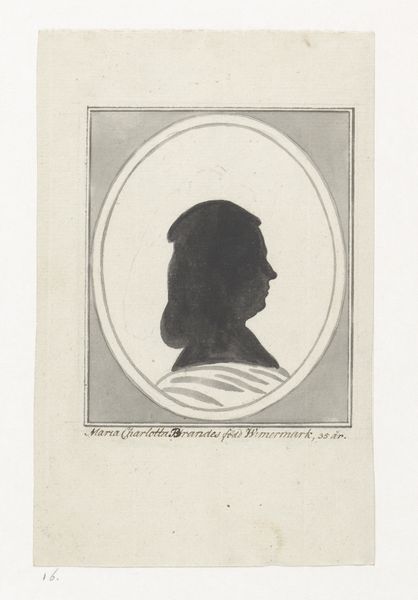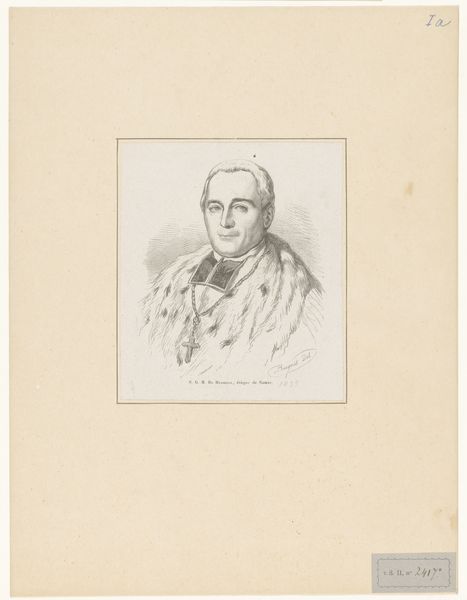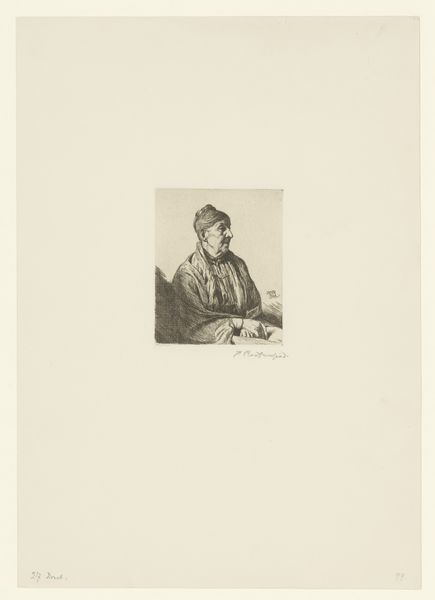
Dimensions: height 449 mm, width 312 mm
Copyright: Rijks Museum: Open Domain
Curator: This captivating image, rendered with delicate strokes of graphite on what looks like aged paper, is entitled "Portret van Johann Friedrich Overbeck". The portrait was masterfully created by A. Lucas sometime between 1835 and 1854. What are your first thoughts on encountering this piece? Editor: The first word that comes to mind is "austere". There's a somber, almost severe quality to the portrait. It's incredibly detailed but lacks warmth; I'm drawn in, but feel slightly unnerved by its cool distance. Curator: I agree. The use of graphite does lend it a certain coolness. There's a quietness too. The side profile view, that slight downward cast of his gaze… I find myself wondering what preoccupied his thoughts. I imagine him deeply immersed in some intellectual pursuit. Editor: Absolutely. Considering the time period, it’s essential to remember the art world's relationship with nationalism. This portrait captures an intellectual, probably part of a growing bourgeoisie, aware of shifting socio-political tides. Do you see his clothes and the austere look contributing to the projection of intellectual authority? Curator: Undoubtedly. He’s positioned in a way that highlights his intellectual prowess and the era's inclination for celebrating profound thinking, although that large collar softens the effect. It makes me consider my own biases in appreciating an artform centered on white, Eurocentric ideals of that time. Do you see avenues for reinterpretation of this kind of historical piece? Editor: I do. If we consider that period, we acknowledge a very specific mode of representation. Viewing art of that era through contemporary, intersectional lenses opens vital dialogue about not only how identity was historically framed but also the systems of power upheld through images. Curator: That really puts things into a richer perspective, thinking about this representation as something actively creating meaning in its time and informing later understandings. Thanks for untangling some of that for me! Editor: My pleasure. It reminds us that every image tells a story, and it's up to us to consider the whole picture.
Comments
No comments
Be the first to comment and join the conversation on the ultimate creative platform.
